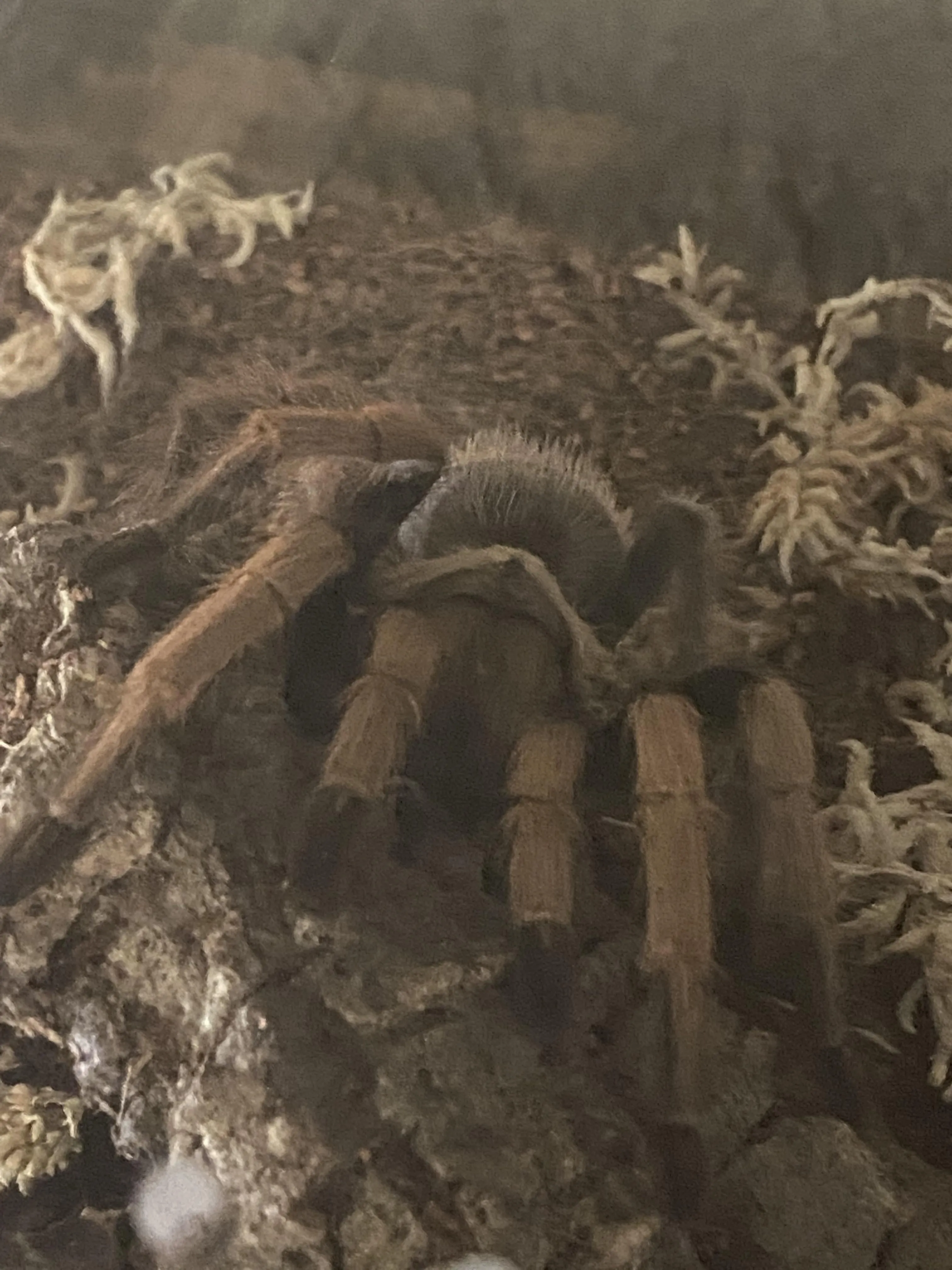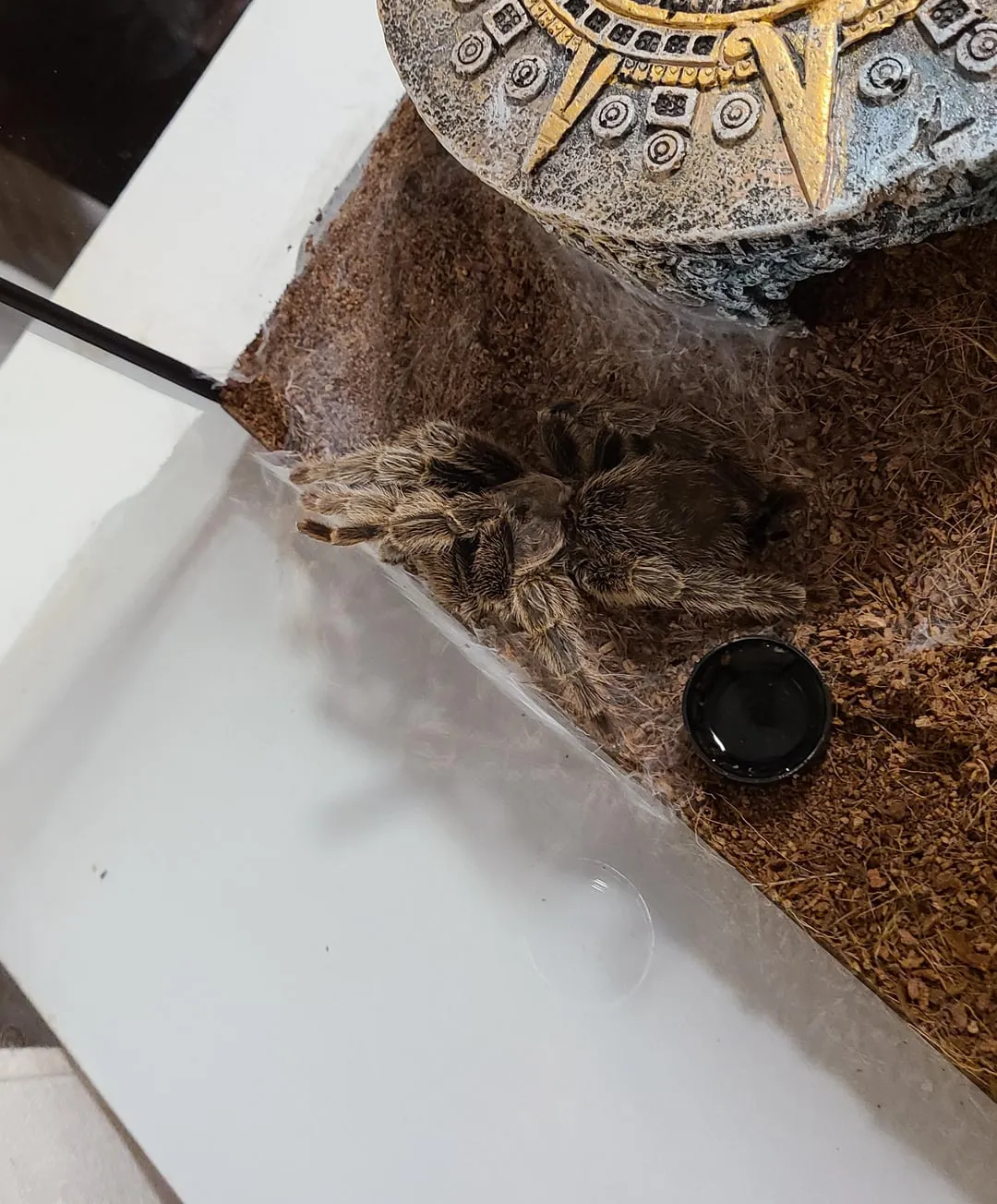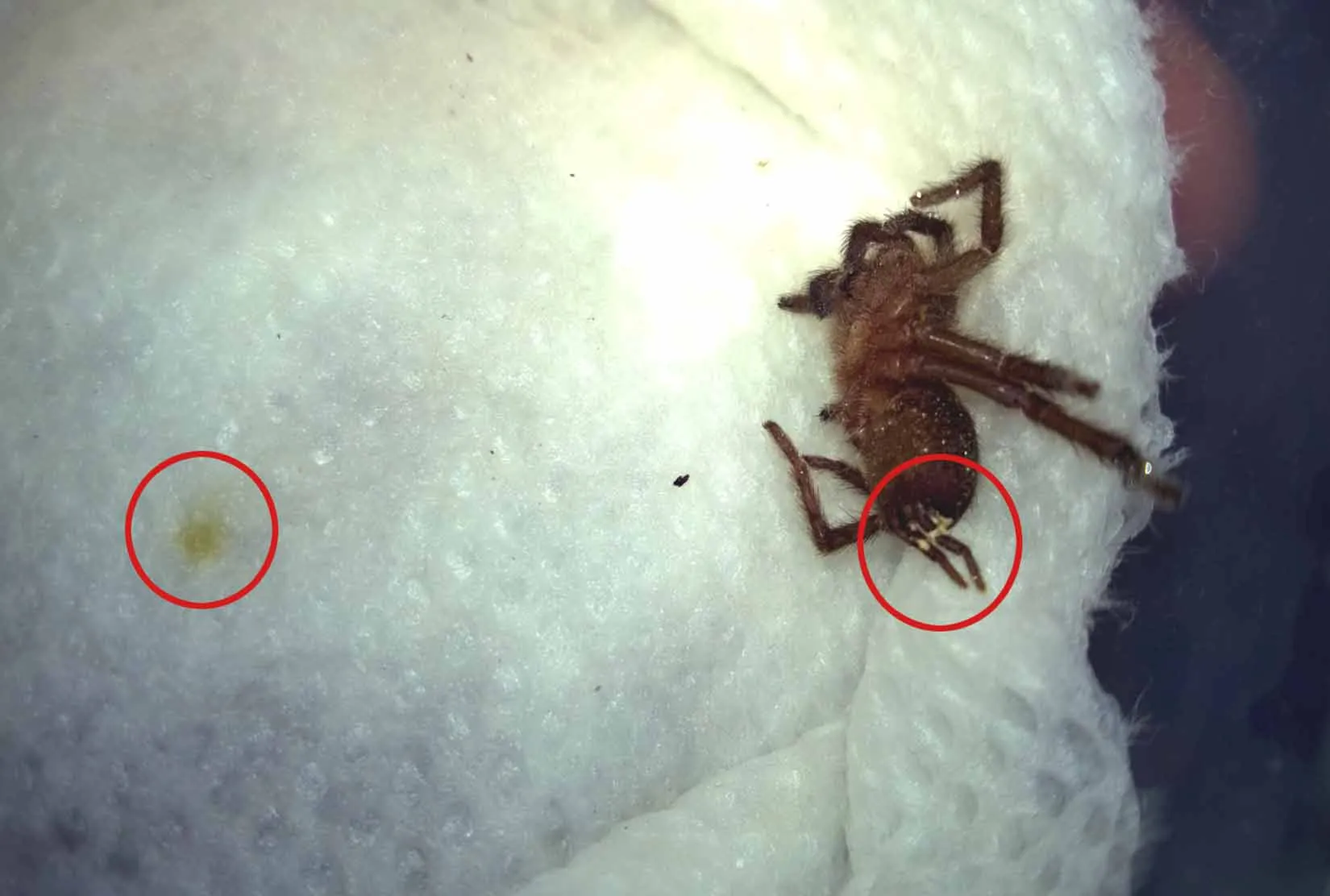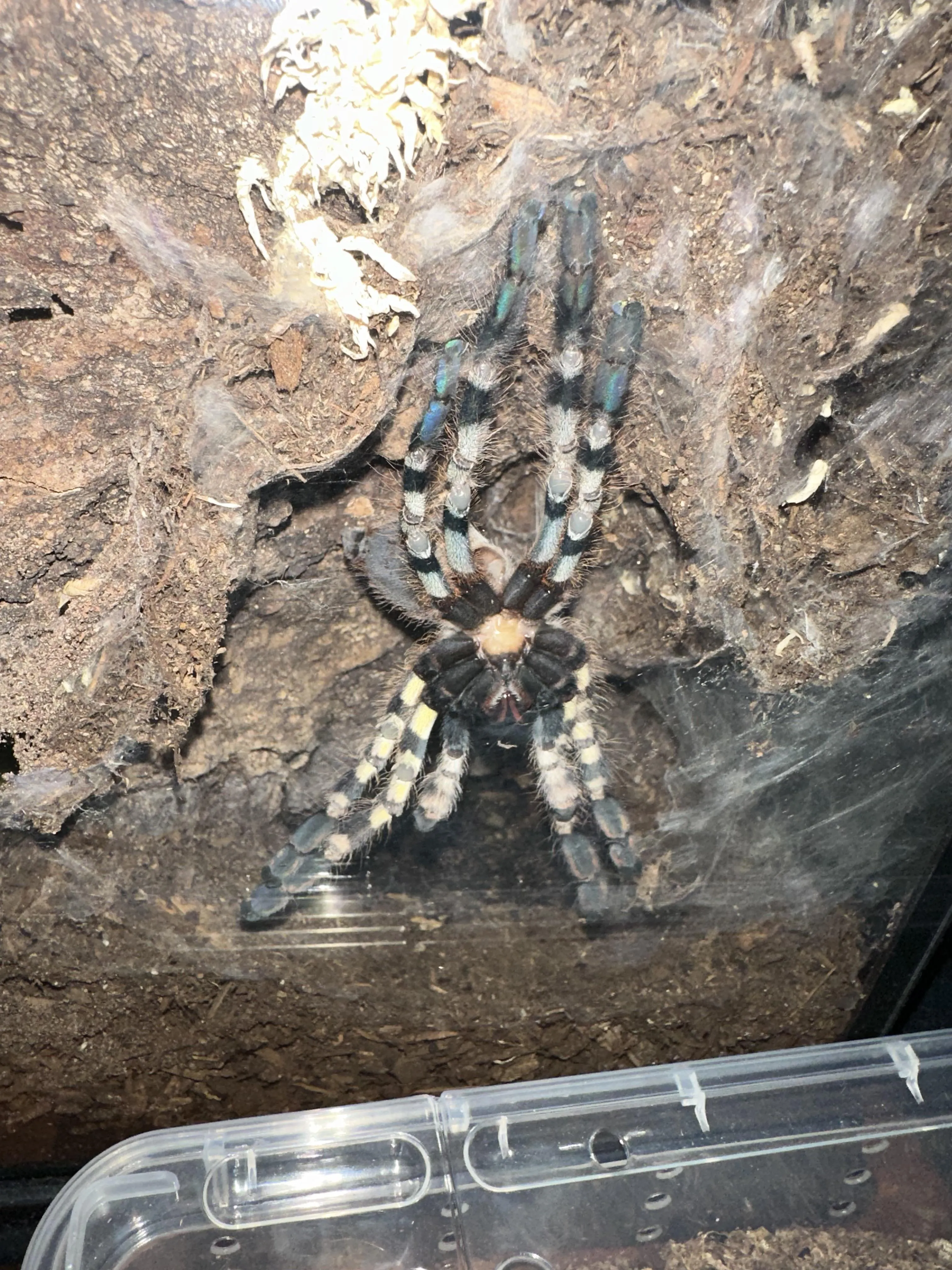Why Is My Tarantula Not Pooping?
Owning a tarantula can be a rewarding experience, but like any pet, they require specific care to thrive. One of the most common concerns for tarantula owners is when their arachnid friend isn’t pooping. This can be a sign of several underlying issues, ranging from simple environmental problems to more serious health concerns. Understanding the reasons behind this can help you provide the best possible care for your tarantula. This guide explores the five most common reasons why a tarantula might not be pooping, providing insights and solutions to keep your eight-legged companion healthy and happy. Addressing the issue promptly can often prevent more serious health complications and ensure your tarantula lives a long and fulfilling life.
Dehydration and Its Impact
Dehydration is a significant factor contributing to constipation in tarantulas. Just like humans, tarantulas need sufficient water to maintain healthy bodily functions, including digestion. When a tarantula is dehydrated, its digestive system slows down, making it difficult to eliminate waste. This can lead to a buildup of undigested food and waste products, causing constipation. Dehydration can stem from various sources, such as a lack of fresh water, low humidity in their enclosure, or even a prolonged period without feeding. It’s crucial to understand that tarantulas, especially those from arid environments, require a specific humidity level to thrive. Insufficient hydration can compromise their overall health, making them more susceptible to other health issues.
Symptoms of Dehydration in Tarantulas

Recognizing the signs of dehydration in your tarantula is crucial for timely intervention. Dehydrated tarantulas often display several telltale signs. The most noticeable symptom is a shrunken abdomen. This is because the abdomen holds water, and as the tarantula loses fluids, the abdomen appears smaller and less plump. Other symptoms include lethargy, a lack of appetite, and a general sluggishness in their movements. Additionally, you might observe the tarantula staying close to its water dish, trying to drink excessively, or their fangs may appear dry. If you notice any of these signs, immediate action is required to rehydrate your pet.
How to Rehydrate Your Tarantula
Rehydrating a dehydrated tarantula requires a multi-pronged approach. First and foremost, ensure your tarantula has access to a constant supply of fresh, clean water. This can be achieved by providing a shallow water dish that is easily accessible and regularly refilled. Additionally, you can gently mist the enclosure with water to increase humidity, particularly if you know that you need to maintain a certain humidity level. In severe cases, you might need to offer the tarantula water directly. Use a small syringe or dropper to gently place water droplets near its mouth. Avoid forcing water into the tarantula, as this can cause it to aspirate. Monitor your tarantula closely for improvement, and adjust your care routine accordingly.
Temperature Issues and Digestion
Temperature plays a vital role in a tarantula’s digestion. Tarantulas are ectothermic, which means their body temperature is regulated by their environment. The metabolic rate of a tarantula is directly related to its body temperature; warmer temperatures boost the rate, and colder temperatures slow it down. If the temperature in the enclosure is too low, the tarantula’s digestive processes will slow significantly, potentially leading to constipation. Therefore, maintaining the appropriate temperature range is essential for proper digestion and overall health.
Ideal Temperature Range for Tarantulas

The ideal temperature range varies depending on the species of tarantula. Most tarantulas thrive in temperatures between 75°F and 85°F (24°C and 29°C). It is essential to research the specific temperature requirements for your tarantula species. Use a reliable thermometer to monitor the temperature within the enclosure. Ensure that the temperature remains consistent throughout the day and night, avoiding drastic fluctuations. Providing a thermal gradient within the enclosure can be beneficial, allowing the tarantula to move to areas with different temperatures as needed. This can be achieved by placing a heat source at one end of the enclosure.
How Temperature Affects Digestion
Temperature significantly influences a tarantula’s digestive processes. In warmer temperatures, the tarantula’s metabolism speeds up, enabling it to process food more quickly. Enzymes work more efficiently, breaking down food, and facilitating waste removal. Conversely, lower temperatures slow down the metabolic rate, which means digestion slows or even halts. This can lead to food remaining undigested for extended periods, which can cause constipation. When the tarantula’s digestive system slows or stops, it is not pooping. Maintaining the correct temperature is critical to ensure that your tarantula’s digestive system functions properly and eliminates waste effectively.
Feeding Problems and Constipation
The type and frequency of feeding can also impact a tarantula’s ability to eliminate waste. Overfeeding, or feeding the tarantula insects that are too large, can cause digestive problems. Conversely, a lack of food can also lead to issues. Ensuring that your tarantula receives an appropriate diet is critical for maintaining digestive health. The frequency with which you feed your tarantula, along with the types of foods, will have an impact on their overall health. Knowing how often to feed your tarantula helps maintain its health.
Proper Feeding Schedule for Tarantulas

The feeding schedule for your tarantula depends on its age and species. Younger tarantulas (spiderlings) generally need to be fed more frequently than adults, sometimes as often as every other day. Adult tarantulas, on the other hand, can often be fed once or twice a week. It’s crucial to avoid overfeeding your tarantula, as this can cause a buildup of undigested food, leading to constipation. Monitor your tarantula’s abdomen size. If it appears overly large or bloated, reduce the frequency and amount of food. Always remove uneaten food within 24 hours to prevent the buildup of bacteria and fungi in the enclosure. Consult resources specific to your species to determine a safe feeding schedule.
Food Types and Their Effects on Digestion
The type of food you provide can also affect a tarantula’s digestive health. A varied diet is essential for providing the necessary nutrients. Crickets, mealworms, and roaches are common food choices, but the nutritional value of each insect varies. Ensure that the insects you feed your tarantula are gut-loaded, meaning they have been fed nutritious foods before being given to your pet. Gut-loading increases the nutritional value of the insect, providing your tarantula with a more balanced diet. Avoid feeding your tarantula insects that have been exposed to pesticides or other harmful chemicals, as these can be toxic and cause digestive issues.
Environmental Stress and Its Effect
Tarantulas are sensitive creatures, and stress can significantly impact their health, including their digestive system. Changes in their environment, loud noises, or frequent disturbances can stress them out. This stress can disrupt their normal behaviors, including feeding and waste elimination. Therefore, maintaining a stress-free environment is crucial for the overall well-being of your tarantula. Knowing what your tarantula considers a stressor will help you know how to make its environment more comfortable.
Identifying Stress in Your Tarantula

Identifying stress in tarantulas can be challenging because they don’t show their emotions like other pets. However, there are some behaviors that indicate stress. These include hiding more than usual, refusing to eat, and pacing or erratic movements within the enclosure. A stressed tarantula may also flick hairs off its abdomen, a defensive behavior. Other signs include a change in posture, such as curling up or becoming rigid. If you notice any of these signs, you should assess your tarantula’s environment to identify the source of the stress and take steps to reduce it.
Creating a Stress-Free Environment
Creating a stress-free environment for your tarantula involves several factors. Ensure that the enclosure is in a quiet location away from loud noises and vibrations. Provide adequate hiding places, such as cork bark or artificial plants, where your tarantula can retreat and feel secure. Avoid frequent disturbances, such as handling the tarantula unnecessarily or moving the enclosure. Maintain consistent temperature and humidity levels, as sudden changes can be stressful. Providing a stable and predictable environment allows your tarantula to feel safe, promoting good health and digestive function. Providing a safe, quiet habitat will help reduce stress for your tarantula.
Parasites and Other Health Problems
While less common, internal parasites or other health problems can also lead to constipation in tarantulas. These issues can disrupt the normal digestive processes and cause waste elimination problems. In such cases, recognizing the symptoms and seeking professional veterinary help is critical. Addressing health problems promptly can often prevent more serious complications and ensure your tarantula lives a long and fulfilling life. Knowing the symptoms to watch for in your tarantula will allow you to help them.
Signs of Parasites or Illness

The signs of parasites or other illnesses can vary. In addition to not pooping, other symptoms include lethargy, loss of appetite, and unusual behaviors, such as twitching or uncoordinated movements. You might also notice a change in the tarantula’s abdomen, such as swelling or discoloration. In some cases, you might see parasites in the enclosure or on the tarantula itself. If you notice these symptoms, it is important to act quickly, as parasites and other illnesses can be harmful. Contact a veterinarian experienced in treating exotic pets, if possible, to get proper diagnosis and treatment.
When to Seek Veterinary Help
It is important to know when to seek professional veterinary help. If your tarantula hasn’t pooped for an extended period, even after addressing potential environmental issues, it is time to consult a veterinarian. Other indicators that require veterinary attention include persistent lethargy, loss of appetite, unusual behaviors, or signs of parasites or illness. A veterinarian experienced in treating exotic animals can perform a thorough examination, diagnose the underlying cause of the problem, and provide appropriate treatment. Early intervention is crucial for ensuring your tarantula’s health and preventing more serious complications. Contacting a vet will give you peace of mind.
Preventative Measures for a Healthy Tarantula
Preventative measures can greatly improve your tarantula’s health and well-being. Providing a suitable habitat, with the correct temperature and humidity levels, is the first step. A balanced diet, with appropriately sized insects and regular feeding schedules, is essential. Always provide fresh, clean water, and ensure that the water dish is regularly cleaned and refilled. Regular monitoring of your tarantula’s behavior and appearance allows you to identify potential health issues early. By taking these preventative measures, you can minimize the risk of health problems, including constipation, and ensure that your tarantula remains healthy and active.
Keeping your tarantula healthy involves a combination of understanding their needs and providing the right environment. By addressing the potential causes of constipation, such as dehydration, temperature issues, feeding problems, and stress, you can promote healthy digestion and waste elimination. Remember to monitor your tarantula closely, address any concerns promptly, and seek professional veterinary advice when necessary. With proper care and attention, you can enjoy the rewarding experience of owning a healthy and thriving tarantula.
